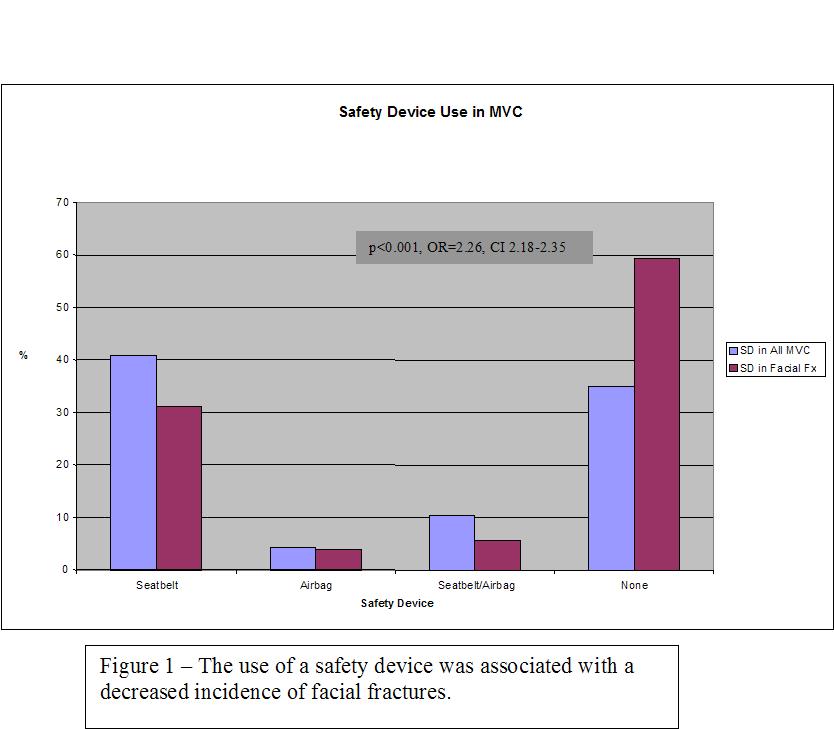Sunday, October 28, 2007
12756
The Use of Safety Devices affects Facial Fracture Patterns in Motor Vehicle Collisions (MVC): Analysis of the National Trauma Database
Background: Airbags and seatbelts are designed to decrease injuries sustained in MVC. We hypothesize that the use of these devices has an effect on the patterns of facial fractures and facial lacerations.
Methods: Retrospective analysis of 15,293 patients from the National Trauma Database with facial fractures and 114,623 patients with facial lacerations resulting from MVC. 565 pan-facial fractures were identified. Fisher's exact test and Pearson's Chi-squared analysis were used to study associations between safety devices and facial trauma severity.
Results: This facial fracture population was 67% male with a mean age of 32 years. Pan-facial fractures occurred in 3.7% of all patients sustaining facial fractures. The two most common types of MVC associated with pan-facial fractures were collisions with other motor vehicles and single motor vehicle rollover accidents. In MVC resulting in facial fractures, 29.3% of patients had a seatbelt, 5.0% a seatbelt and airbag, 4.2% an airbag only, and 59.7% had no safety device. The use of a safety device decreased the incidence of facial fractures (OR 2.26), pan-facial fractures (OR 2.98) and facial lacerations (OR 1.95). Upon analysis of the facial fracture group, 49.5% tested positive for alcohol and 52.7% had a positive drug test. A CT Head positive for an intracranial bleed was found in 38.6% of the facial fracture group and 46.2% of the pan-facial group (OR 1.36). The GCS score (mean=10.2) and the base deficit (mean=4.09) on admission was lower in the pan-facial group compared to the 1 or 2 fracture group. Interestingly, there was no significant difference (19.9% vs. 20.4%, p=0.79) in the incidence of cervical spine injuries between the 1 or 2 facial fracture groups and the pan-facial fracture group. On subgroup analysis, passengers were less likely to have safety devices and more likely to sustain facial fractures.
Conclusions: Based on the largest reported series on MVC associated facial fractures in the United States, the use of airbags and seatbelts is associated with a significantly decreased incidence of facial fractures and lacerations. Given that less than half of these patients used a safety device and the high morbidity and costs associated with these injuries, plastic surgeons should advocate for the increased use of these safety devices.
View Synopsis (.doc format, 64.0 kb)

